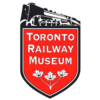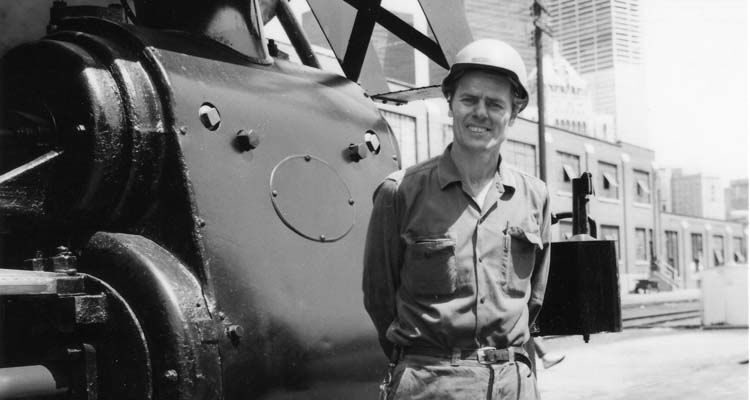In 2010, the Toronto Railway Historical Association (TRHA) team interviewed John C. Clarke. Clarke worked as the locomotive shop foreman at the John Street Roundhouse in the 1970s. As a result John Clarke graciously shared his story and some photographs, which you can see here.

Family ties
John C. Clarke is the third of four generations of Clarkes who have worked for the Canadian Pacific Railway. Charles L. Clarke, John’s grandfather, was a bridge and building master for CPR in New Brunswick for forty years. In addition, John’s father, Donald G Clarke, was a CPR express messenger for 47 years, working mostly out of Toronto. Subsequently, as of 2002, four out of five of John’s sons continued to work for Canadian Pacific.
John C. Clarke began working for the CPR at John Street as a machinist apprentice on June 1, 1942, the day he turned 18. As a result he earned 30 cents an hour and worked six days a week. In 1942, the John Street Roundhouse had been open for thirteen years.
Clarke’s birthday continued to resonate in his career and he was appointed assistant foreman on June 1, 1951 on the 4pm to 12am shift. He went back to day shift work on June 1, 1972 when he became the shop foreman at John Street.
Life at John Street
As a result of the soaring popularity of steam train travel, the John Street Roundhouse operated 24 hours a day, 7 days a week. The early 1940s in particular saw increased demand and pressures put on the railways as the war effort called for the transport of both troops and supplies.

For example, there were about fifty Canadian Pacific Railway trains per day scheduled in and out of Union Station in the summer of 1942. Consequently, each train was hauled by a steam locomotive that would have needed servicing at John Street after completing its journey.
Restoration for excursions
During the 1970s, a number of steam locomotives (then being readied for railfan excursion service) were restored at the Roundhouse. While diesel locomotives had begun to fully replace steam locomotives in the 1960s, there were still a number of Canadian Pacific employees at John Street who were familiar with steam technology.
The facilities and equipment necessary for the kinds of maintenance and repair tasks such excursions needed were found at the John Street Roundhouse. Many other roundhouses in Canada had either been demolished or had their steam maintenance equipment removed, making John Street a good fit for these restorations.

CPR Nos. 136 and 1057
Two of the steam locomotives whose restoration was supervised by Mr. Clarke were CPR Nos. 136 and 1057. Both engines participated in the famous excursion on May 1, 1960. In addition, No 136 was restored for the filming of the CBC television series The National Dream in 1972.
Nos. 136 and 1057 are in the South Simcoe Railways Tottenham, ON) collection today.

We’d love to hear from you
In conclusion, we’re always looking to add voices to our growing audio archive of stories and memories from the rails – we’d love to hear from you!
So, if you are interested in sharing your stories and experiences in an interview, please email manager@trha.ca. Firstly include your name, contact information, job title, railway(s) worked for and location(s), and years on the job. After that, an interviewer will contact with you!

